304l Stainless Steel Powder
$0.00
304l Stainless Steel Powder
| Product | 304l Stainless Steel Powder |
| CAS No. | 11143-21-4 |
| Appearance | Metallic Gray or Silver Powder |
| Purity | ≥99%, ≥99.9%, ≥95%(Other purities are also available) |
| APS | 1-5 µM, 10-53 µM (Can be customized), Ask for other available size range. |
| Ingredient | Fe-Cr-Ni |
| Density | 7.9g/cm3 |
| Molecular Weight | N/A |
| Product Codes | NCZ-DCY-338/25 |
304l Stainless Steel Description:
304l Stainless Steel Powder is one of the numerous advanced ceramic materials manufactured by Nanochemazone. Nanochemazone produces too many standard grades when applicable, including Mil Spec (military grade); ACS, Reagent and Technical Grade; Food, Agricultural and Pharmaceutical Grade; Optical Grade, USP and EP/BP (European Pharmacopoeia/British Pharmacopoeia) and follows applicable ASTM testing standards. Typical and custom packaging is available. Additional technical, research and safety (MSDS) information are available. Please request a quote above for more information on lead time and pricing.
304l Stainless Steel Powder Related Information :
Storage Conditions:
Airtight sealed, avoid light and keep dry at room temperature.
Please contact us for customization and price inquiry
Email: [email protected]
Note: We supply different size ranges of Nano and micron as per the client’s requirements and also accept customization in various parameters.
304l Stainless Steel Powder
304L stainless steel powder is an austenitic chromium-nickel stainless steel powder with low carbon content. It offers excellent corrosion resistance, good formability and weldability, and widely used for powder metallurgy applications. The ‘L’ denotes lower carbon compared to 304 standard grade. The low carbon minimizes carbide precipitation and maximizes corrosion resistance. Powder metallurgy 304L provides a cost-effective alternative to 316L for non-critical applications not needing molybdenum alloying.
Overview
304L stainless steel powder is an austenitic chromium-nickel stainless steel powder with low carbon content. It offers excellent corrosion resistance, good formability and weldability, and widely used for powder metallurgy applications.
The ‘L’ denotes lower carbon compared to 304 standard grade. The low carbon minimizes carbide precipitation and maximizes corrosion resistance. Powder metallurgy 304L provides a cost-effective alternative to 316L for non-critical applications not needing molybdenum alloying.
This article provides an in-depth look at 304L stainless steel powder covering composition, properties, processing, applications, specifications, suppliers, costs, and other technical details.
Composition
The nominal composition of 304L stainless steel powder is listed below:
Table: Typical composition of 304L stainless steel powder
| Element | Weight % |
| Chromium (Cr) | 18-20 |
| Nickel (Ni) | 8-10.5 |
| Manganese (Mn) | <2 |
| Silicon (Si) | <1 |
| Carbon (C) | <0.03 |
| Sulfur (S) | <0.03 |
| Phosphorus (P) | <0.045 |
| Nitrogen (N) | <0.1 |
| Iron (Fe) | Balance |
Chromium and nickel are the main alloying elements. Chromium provides corrosion and oxidation resistance. Nickel enhances ductility, toughness, and weldability.
Manganese and silicon increase strength. Carbon is kept very low for optimum corrosion resistance. Sulfur, phosphorus, and nitrogen are impurities that are minimized.
Properties
Key properties of 304L stainless steel powder in the annealed condition are provided below:
Table: Properties of 304L stainless steel powder
| Property | Value |
| Density | 7.9-8.1 g/cm3 |
| Ultimate Tensile Strength | 505-620 MPa |
| Yield Strength | 205-275 MPa |
| Elongation | ≥40% |
| Hardness | ≤92 HRB |
| Modulus of Elasticity | 190-210 GPa |
| Melting Point | 1400-1450°C |
| Thermal Conductivity | 16 W/m-K |
| Electrical Resistivity | 0.072 μΩ-cm |
The combination of properties make 304L highly useful for a wide range of applications. The austenitic microstructure provides ductility, toughness, and non-magnetic behavior. 304L has excellent corrosion resistance comparable to 316L stainless steel.
By selecting ultra-low carbon powder, carbide precipitation can be avoided to maximize corrosion resistance in critical applications. Strength and hardness can be increased through cold working.
Applications
Typical applications for 304L stainless steel powder include:
Food processing equipment
Pharmaceutical tooling
Chemical plant components
Architectural panels, railings
Medical instruments and implants
Marine hardware, fittings, fasteners
Consumer products, appliances
Powder metallurgy mechanical parts
3D printing powders
304L provides cost-effective corrosion resistance versus 316L when molybdenum alloying is not needed for highly corrosive environments. The excellent polishability and non-magnetic properties also suits 304L for architectural cladding and hardware components.
Powder metallurgy is commonly used to produce small precision parts from 304L at high volumes versus machining. Additive manufacturing utilizes 304L powder for prototypes, tooling, and end-use components across industries.
Powder Manufacturing
304L stainless steel powder is commercially manufactured via gas atomization or water atomization processes.
In gas atomization, a high pressure inert gas stream disintegrates the molten metal into fine droplets, producing spherical powders ideal for additive manufacturing and MIM. Particle size distribution is controlled through process parameters.
Water atomization uses high pressure water jets to break up the metal stream into fine particles. This generates irregular, satellite particle shapes. The powder requires post-treatment for additive manufacturing.
Plasma atomization is sometimes used to produce very spherical, clean powders from a metal plasma stream in a controlled inert atmosphere. This ensures high purity and flowability.
304L stainless steel powder is commercially available in various size ranges, morphologies, and quality levels. Some typical powder specifications are below:
Table: 304L stainless steel powder specifications
| Attribute | Details |
| Particles sizes | 15-45 μm, 10-100 μm |
| Morphology | Spherical, irregular |
| Apparent density | 2.5-4.5 g/cm3 |
| Tap density | 4-5 g/cm3 |
| Hall flow rate | <30 s/50g |
| Purity | >99.5% |
| Oxygen content | <2000 ppm |
| Moisture content | <0.2% |
Smaller particle sizes below 45 μm are preferred for capturing fine features in additive manufacturing. Spherical particles provide good flowability. Apparent density correlates with powder packing efficiency.
High purity, low oxygen, and controlled moisture levels ensure quality sintered properties. Gas atomized powder offers the best specifications for critical applications.
Standards and Grades
304L stainless steel powder complies with the following standards:
ASTM A240 – Standard for chromium and chromium-nickel stainless steel plate, sheet, and strip
ASTM A313 – Standard for stainless steel spring wire
ASTM A314 – Standard for stainless steel bent wire
AMS 5501 – Stainless steel bars, wire, forgings, tubing with low carbon
AMS 5647 – Stainless steel powder, atomized, 304L
Equivalent grades include:
UNS S30403
Werkstoff No. 1.4306
SUS 304L
SS2348
Powder Storage and Handling
To prevent contamination and maintain powder properties, 304L stainless steel powder should be stored and handled as follows:
Store in sealed containers in a cool, dry environment
Use inert gas purging or vacuum to prevent moisture pickup
Keep away from sparks, flames, and ignition sources
Ground all powder handling and transfer equipment
Avoid contact with contaminants like oil, grease, paints, etc.
Use PPE – mask, gloves, eye protection when handling powder
Powder spills should be promptly cleaned using non-sparking tools and HEPA vacuuming. Powders are moderately sensitive to moisture and air exposure. Proper storage is key.
Metal Injection Molding
304L is widely used for metal injection molding of small, complex parts leveraging powder metallurgy. Key considerations include:
Feedstock: 60-68% powder loading with multi-component binder system
Molding: High shot size, fast injection speed, high holding pressure
Debinding: Solvent debinding followed by thermal debinding
Sintering: 1350-1400°C in hydrogen or vacuum atmosphere
Secondary Operations: Machining, laser marking, passivation, electropolishing
MIM service bureaus have established best practices for high-performance 304L parts with as-sintered properties approaching wrought material.
Design for AM
For additive manufacturing using 304L stainless steel powder, key design guidelines include:
Maintain wall thicknesses above 1 mm
Use self-supporting geometries with angles above 45°
Include drain holes to remove unfused powder
Observe build orientation effects on properties
Account for 20-25% shrinkage when designing mating parts
Include machining allowances of 0.5-1 mm for critical fits
Reduce overhangs, bridges, fine details that require supports
Quality Control
Quality control testing performed on 304L stainless steel powder includes:
Chemical analysis – ICP and OES to verify composition
Particle size analysis – Laser diffraction particle size analyzer
Powder morphology – SEM imaging at high magnifications
Apparent density and tap density – Hall flowmeter method
Powder flow rate – Hall flowmeter funnel method
Loss on ignition – ASTM E sin gravity furnace
Moisture analysis – Karl Fischer titration, LECO analysis
For sintered MIM parts, testing includes:
Dimensional tolerances – CMM inspection
Density – Archimedes method
Microstructure – Optical microscopy, image analysis
Mechanical testing – Hardness, tensile, fatigue, Charpy impact
Health and Safety
Like most stainless steel powders and parts, 304L poses little health risk with proper handling:
Wear PPE when handling powder – mask, gloves, goggles
Avoid skin contact to prevent sensitization
Use HEPA-filtered vacuum for clean-up of dust and powder
Avoid breathing any welding or melting fumes
Dispose according to local environmental regulations
Ensure adequate ventilation and respiratory protection if grinding or machining sintered parts
No special disposal precautions are needed for 304L. With sound procedures, it poses minimal hazard for workers and the environment.
FAQ
1.What is the difference between 304 and 304L stainless steel powder?
304L has lower carbon content (<0.03%) than 304 (<0.08%) for better corrosion resistance,especially for welding. 304 is more common.
2.Does 304L powder require a controlled atmosphere?
Not necessarily, but storage in sealed containers with inert gas prevents oxidation and contamination.
3.What particle size is best for AM?
15-45 microns is typical for powder bed fusion AM to provide good flow and high resolution. Larger sizes from 45-100 microns are also used.
4.Is 304L used for metal 3D printing?
Yes, 304L is widely used for powder bed and directed energy deposition 3D printing to make prototypes, tooling, and end-use parts.
5.What causes powder to oxidize and lose reusability?
Exposure to air/moisture causes surface oxidation. Proper sealed storage with desiccant and oxygen absorbers prevents this.
6.Does 304L require solution annealing after laser sintering?
Yes, stress relieving at 1050-1150°C and rapid cooling helps restore ductility and toughnessafterthe rapid solidification.
7.What finish can be expected on as-sintered MIM 304L parts?
Around Ra 3-6 microns initially. Polishing and etching can achieve under 0.5 micron. Plating also gives a smooth finish.
8.What tolerance can be achieved with 304L MIM parts?±0.1-0.3% is typical but tolerances under ±0.1% are possible for high precision components.
9.Why is 304L preferred over 304 stainless steel?
The lower carbon gives 304L better corrosion resistance, especially for weldments, reducing sensitization. It has become the dominant grade.
10.What is the cost premium for 304L vs. 304 powder?
Typically 10-30% higher cost for 304L due to the lower carbon composition. Price also depends on quantities ordered.
Category: Iron Based Alloy Powder
Description
Description
Note: For pricing & ordering information, please get in touch with us at [email protected]
Please contact us for quotes on Larger Quantities and customization. E-mail: [email protected]
Customization:
If you are planning to order large quantities for your industrial and academic needs, please note that customization of parameters (such as size, length, purity, functionalities, etc.) is available upon request.
NOTE:
Images, pictures, colors, particle sizes, purity, packing, descriptions, and specifications for the real and actual goods may differ. These are only used on the website for the purposes of reference, advertising, and portrayal. Please contact us via email at [email protected] or by phone at (+1 780 612 4177) if you have any questions.
Reviews (0)
Only logged in customers who have purchased this product may leave a review.
Shipping & Delivery
Related products
17-4PH Stainless Steel Powder
$0.00
17-4PH Stainless Steel Powder
| Product | 17-4PH Stainless Steel Powder |
| CAS No. | 7439-89-6 |
| Appearance | Grey Powder |
| Purity | ≥99%, ≥99.9%, ≥95%(Other purities are also available) |
| APS | 1-5 µM, 10-53 µM (Can be customized), Ask for other available size range. |
| Ingredient | Fe-Cr-Ni-Cu-Nb |
| Density | 7.75g/cm3 |
| Molecular Weight | N/A |
| Product Codes | NCZ-DCY-336/25 |
17-4PH Stainless Steel Description:
17-4PH Stainless Steel Powder is one of the numerous advanced ceramic materials manufactured by Nanochemazone. Nanochemazone produces too many standard grades when applicable, including Mil Spec (military grade); ACS, Reagent and Technical Grade; Food, Agricultural and Pharmaceutical Grade; Optical Grade, USP and EP/BP (European Pharmacopoeia/British Pharmacopoeia) and follows applicable ASTM testing standards. Typical and custom packaging is available. Additional technical, research and safety (MSDS) information are available. Please request a quote above for more information on lead time and pricing.17-4PH Stainless Steel Powder Related Information :
Storage Conditions: Airtight sealed, avoid light and keep dry at room temperature. Please contact us for customization and price inquiry Email: [email protected] Note: We supply different size ranges of Nano and micron as per the client’s requirements and also accept customization in various parameters. 17-4PH Stainless Steel Powder 17-4PH is a precipitation hardening stainless steel powder widely used in additive manufacturing across aerospace, medical, automotive, and general engineering sectors. It offers an excellent combination of high strength, good corrosion resistance, and weldability. Overview of 17-4PH Stainless Steel Powder 17-4PH is a precipitation hardening stainless steel powder widely used in additive manufacturing across aerospace, medical, automotive, and general engineering sectors. It offers an excellent combination of high strength, good corrosion resistance, and weldability. This article provides a detailed guide to 17-4PH powder covering composition, properties, AM process parameters, applications, specifications, suppliers, handling, inspection, comparisons, pros and cons, and FAQs. Key information is presented in easy-to-reference tables. Composition of 17-4PH Stainless Steel Powder The composition of 17-4PH powder is:| Element | Weight % | Purpose |
| Iron | Balance | Principal matrix element |
| Chromium | 15 – 17.5 | Oxidation resistance |
| Copper | 3 – 5 | Precipitation hardening |
| Nickel | 3 – 5 | Austenite stabilizer |
| Niobium | 0.15 – 0.45 | Carbide former |
| Manganese | 1 max | Deoxidizer |
| Silicon | 1 max | Deoxidizer |
| Carbon | 0.07 max | Strengthener and carbide former |
| Property | Description |
| High strength | Up to 1310 MPa tensile strength when aged |
| Hardness | Up to 40 HRC in aged condition |
| Corrosion resistance | Comparable to 316L stainless in many environments |
| Toughness | Superior to martensitic stainless steels |
| Wear resistance | Better than 300 series stainless steels |
| High temperature stability | Strength maintained up to 300°C |
| Parameter | Typical value | Purpose |
| Layer height | 20-100 μm | Balance speed and resolution |
| Laser power | 150-400 W | Sufficient melting without evaporation |
| Scan speed | 400-1000 mm/s | Density versus production rate |
| Hatch spacing | 100-200 μm | Density and mechanical properties |
| Support structure | Minimal | Easy removal |
| Hot isostatic pressing | 1120°C, 100 MPa, 3 hrs | Eliminate porosity |
| Industry | Applications |
| Aerospace | Structural brackets, fixtures, actuators |
| Medical | Dental implants, surgical instruments |
| Automotive | High strength fasteners, gears |
| Consumer products | Watch cases, sporting equipment |
| Industrial | End-use metal tooling, jigs, fixtures |
| Parameter | Specification |
| Particle size range | 15-45 μm typical |
| Particle shape | Spherical morphology |
| Apparent density | > 4 g/cc |
| Tap density | > 6 g/cc |
| Hall flow rate | > 23 sec for 50 g |
| Purity | >99.9% |
| Oxygen content | <100 ppm |
| Method | Parameters Tested |
| Sieve analysis | Particle size distribution |
| SEM imaging | Particle morphology |
| EDX | Chemistry and composition |
| XRD | Phases present |
| Pycnometry | Density |
| Hall flow rate | Powder flowability |
| Alloy | Strength | Corrosion Resistance | Cost | Printability |
| 17-4PH | Excellent | Good | Medium | Good |
| 316L | Medium | Excellent | Medium | Excellent |
| IN718 | Very High | Good | High | Fair |
| CoCrMo | Medium | Fair | Medium | Good |
| Pros | Cons |
| High strength-to-weight ratio | Lower oxidation resistance than austenitic stainless steels |
| Good combination of strength and corrosion resistance | Required post-processing like HIP and heat treatment |
| Lower cost than exotic alloys | Controlled atmosphere storage needed |
| Established credentials in AM | Difficult to weld and machine |
| Properties match wrought material | Susceptible to pitting and crevice corrosion |
18Ni300 Powder
$0.00
18Ni300 Powder
| Product | 18Ni300 Powder |
| CAS No. | 7440-02-0 |
| Appearance | Grey to Dark Grey Powder |
| Purity | ≥99%, ≥99.9%, ≥95%(Other purities are also available) |
| APS | 1-5 µM, 10-53 µM (Can be customized), Ask for other available size range. |
| Ingredient | 18Ni |
| Density | 8.0g/cm3 |
| Molecular Weight | N/A |
| Product Codes | NCZ-DCY-348/25 |
18Ni300 Description:
18Ni300 Powder is one of the numerous advanced ceramic materials manufactured by Nanochemazone. Nanochemazone produces too many standard grades when applicable, including Mil Spec (military grade); ACS, Reagent and Technical Grade; Food, Agricultural and Pharmaceutical Grade; Optical Grade, USP and EP/BP (European Pharmacopoeia/British Pharmacopoeia) and follows applicable ASTM testing standards. Typical and custom packaging is available. Additional technical, research and safety (MSDS) information are available. Please request a quote above for more information on lead time and pricing.18Ni300 Powder Related Information :
Storage Conditions: Airtight sealed, avoid light and keep dry at room temperature. Please contact us for customization and price inquiry Email: [email protected] Note: We supply different size ranges of Nano and micron as per the client’s requirements and also accept customization in various parameters. Properties and Characteristics of 18Ni300 Powder 18Ni300 powder boasts a unique combination of properties that make it a highly sought-after material for 3D printing applications. Here are some of its key characteristics:| Property | Description |
| High Strength and Toughness | Even after 3D printing, 18Ni300 parts exhibit exceptional strength and toughness, making them ideal for demanding applications. Imagine a 3D-printed gear that can withstand incredible pressure without breaking – that’s the power of 18Ni300. |
| Excellent Wear Resistance | This material stands up to wear and tear remarkably well. Think of a 3D-printed mold that retains its shape and function even after countless uses. |
| Low-Carbon Content | The low carbon content minimizes the risk of cracking during the 3D printing process, ensuring smooth and reliable production. |
| Good Weldability | 18Ni300 parts can be readily welded, allowing for the creation of complex structures or the joining of 3D-printed components with traditional manufacturing techniques. |
| High Dimensional Accuracy | The spherical shape and consistent particle size of 18Ni300 powder contribute to excellent dimensional accuracy in the final 3D-printed parts. |
| Industry | Application Examples |
| Aerospace | High-strength components for aircraft landing gear, rocket engine parts, and other critical structures. |
| Oil & Gas | Wear-resistant parts for downhole tools, valves, and other equipment exposed to harsh environments. |
| Automotive | High-performance gears, shafts, and other components for demanding applications. |
| Medical | Biocompatible implants and surgical instruments requiring exceptional strength and durability. |
| Defense | Armor components, weapon parts, and other applications where lightweight yet robust materials are essential. |
| Specification | Description |
| Particle Size | The size of the powder particles significantly impacts the final properties and printability of the 3D-printed part. Finer powders generally offer better surface finish and detail but may require specialized printing equipment. |
| Flowability | The powder’s ability to flow freely is essential for even distribution during the 3D printing process. Good flowability ensures consistent material deposition and minimizes printing defects. |
| Apparent Density | This refers to the weight of powder per unit volume. It’s a crucial factor for determining the amount of material needed for your print and optimizing printing parameters. |
| Grade | Different grades of 18Ni300 powder may offer variations in composition or properties to cater to specific application needs. For instance, some grades might prioritize higher strength, while others focus on improved machinability. |
420 Powder
$0.00
420 Powder
| Product | 420 Powder |
| CAS No. | 420-04-2 |
| Appearance | Silvery-Gray Powder |
| Purity | ≥99%, ≥99.9%, ≥95%(Other purities are also available) |
| APS | 1-5 µM, 10-53 µM (Can be customized), Ask for other available size range. |
| Ingredient | Fe-12Cr-0.3C |
| Density | 7.9g/cm3 |
| Molecular Weight | N/A |
| Product Codes | NCZ-DCY-342/25 |
420 Description:
420 Powder is one of the numerous advanced ceramic materials manufactured by Nanochemazone. Nanochemazone produces too many standard grades when applicable, including Mil Spec (military grade); ACS, Reagent and Technical Grade; Food, Agricultural and Pharmaceutical Grade; Optical Grade, USP and EP/BP (European Pharmacopoeia/British Pharmacopoeia) and follows applicable ASTM testing standards. Typical and custom packaging is available. Additional technical, research and safety (MSDS) information are available. Please request a quote above for more information on lead time and pricing.420 Powder Related Information:
Storage Conditions: Airtight sealed, avoid light and keep dry at room temperature. Please contact us for customization and price inquiry Email: [email protected] Note: We supply different size ranges of Nano and micron as per the client’s requirements and also accept customization in various parameters. 420 powder 316L is an austenitic stainless steel. The Mo content of 316L gives it excellent corrosion resistance 17-4PH is a martensitic precipitation hardening stainless steel with high strength, hardness and corrosion resistance. 420 is a martensitic stainless steel with good mechanical properties, thermal conductivity and polishing properties similar to mold steel, while maintaining good corrosion resistance. 316L is an austenitic stainless steel. The Mo content of 316L gives it excellent corrosion resistance 17-4PH is a martensitic precipitation hardening stainless steel with high strength, hardness and corrosion resistance. 420 is a martensitic stainless steel with good mechanical properties, thermal conductivity and polishing properties similar to mold steel, while maintaining good corrosion resistance. Physical properties| Trademark | Size range | Size distribution | Hall flow rate | Bulk density | Tap density | ||
| D10(μm) | D50(μm) | D90(μm) | |||||
| 316L | 15-53μm | 17-23 | 30-38 | 50-58 | 25s/50g | 4.0g/cm³ | 4.5g/cm³ |
| 17-4PH | 15-53μm | 4.0g/cm³ | 4.5g/cm³ | ||||
| 420 | 15-53μm | 4.0g/cm³ | 4.5g/cm³ | ||||
| Trademark | Heat treatment recommendations |
| 316L | 1050℃/2h/WQ |
| 17-4PH | 1040°C/2h +480°C/4h |
| 420 | 1050°C/0.5h/WQ |
| Trademark | Hardness(HRC) | Tensile strength (σb/Mpa) | Yield strength (σp0.2/Mpa) | Elongation (δ5/%) |
| 316L | 13-15 | 650 | 550 | 45 |
| 17-4PH | 32-42 | 1310 | 1175 | 13 |
| 420 | 48-52 | 1950 | 1530 | 7 |
| Trademark | C | Cr | Ni | Cu | Nb | Mo |
| 316L | ≤0.03 | 16.00-18.00 | 10.00-14.00 | – | – | 2.00-3.00 |
| 17-4PH | ≤0.03 | 15.5-17.5 | 3.00-5.00 | 3.00-5.00 | 0.15-0.45 | – |
| 420 | 0.35-0.45 | 12.00-14.00 | ≤0.6 | – | ≤0.20 | ≤0.20 |
| Trademark | Si | Mn | S | P | O | Fe |
| 316L | ≤1.00 | ≤2.00 | ≤0.03 | ≤0.045 | ≤0.08 | Bal |
| 17-4PH | ≤1.00 | ≤1.00 | ≤0.03 | ≤0.03 | ≤0.03 | Bal |
| 420 | ≤1.00 | ≤1.00 | ≤0.03 | ≤0.045 | ≤0.03 | Bal |
430L Powder
$0.00
430L Powder
| Product | 430L Powder |
| CAS No. | 7439-89-6 |
| Appearance | Silvery-Gray Powder |
| Purity | ≥99%, ≥99.9%, ≥95%(Other purities are also available) |
| APS | 1-5 µM, 10-53 µM (Can be customized), Ask for other available size range. |
| Ingredient | Fe-16Cr |
| Density | 2.8g/cm3 |
| Molecular Weight | N/A |
| Product Codes | NCZ-DCY-343/25 |
430L Description:
430L Powder is one of the numerous advanced ceramic materials manufactured by Nanochemazone. Nanochemazone produces too many standard grades when applicable, including Mil Spec (military grade); ACS, Reagent and Technical Grade; Food, Agricultural and Pharmaceutical Grade; Optical Grade, USP and EP/BP (European Pharmacopoeia/British Pharmacopoeia) and follows applicable ASTM testing standards. Typical and custom packaging is available. Additional technical, research and safety (MSDS) information are available. Please request a quote above for more information on lead time and pricing.430L Powder Related Information :
Storage Conditions: Airtight sealed, avoid light and keep dry at room temperature. Please contact us for customization and price inquiry Email: [email protected] Note: We supply different size ranges of Nano and micron as per the client’s requirements and also accept customization in various parameters. 430L Powder 430L powder is a ferritic stainless steel powder containing 17% chromium with additions of molybdenum and niobium for enhanced corrosion resistance. It provides an optimal balance of corrosion resistance, strength, weldability and cost. Overview of 430L Powder 430L powder is a ferritic stainless steel powder containing 17% chromium with additions of molybdenum and niobium for enhanced corrosion resistance. It provides an optimal balance of corrosion resistance, strength, weldability and cost. Key properties and advantages of 430L powder: 430L Powder Properties and Characteristics| Properties | Details |
| Composition | Fe-17Cr-Nb-Mo alloy |
| Density | 7.7 g/cc |
| Particle shape | Irregular, angular |
| Size range | 10-150 microns |
| Apparent density | Up to 50% of true density |
| Flowability | Moderate |
| Corrosion resistance | Excellent in many environments |
| Strengthening | Solid solution and precipitation strengthening |
| Element | Weight % |
| Iron (Fe) | Balance |
| Chromium (Cr) | 16-18% |
| Carbon (C) | 0.12% max |
| Silicon (Si) | 1% max |
| Manganese (Mn) | 1% max |
| Molybdenum (Mo) | 0.5% max |
| Niobium (Nb) | 0.3-0.6% |
| Nitrogen (N) | 0.03% max |
| Sulfur (S) | 0.03% max |
| Property | Values |
| Density | 7.7 g/cc |
| Melting point | 1400-1450°C |
| Electrical resistivity | 0.6-0.7 μΩ-m |
| Thermal conductivity | 26 W/mK |
| Curie temperature | 1440°C |
| Maximum service temperature | 650-750°C |
| Industry | Example Uses |
| Chemical | Tanks, valves, pipes, pumps |
| Automotive | Exhaust components, fuel injection parts |
| Construction | Cladding, architectural features |
| Oil and gas | Wellhead equipment, drilling tools |
| Manufacturing | Pressing tooling, molds, dies |
| Standard | Description |
| ASTM A743 | Standard for corrosion resistant chromium steel castings |
| ASTM A744 | Standard for corrosion resistant chromium steel sheet and strip |
| AMS 5759 | Annealed corrosion resistant steel bar, wire, forgings |
| SAE J405 | Automotive weathering steel sheet |
| DIN 17440 | Stainless steels for corrosion resistant applications |
| Particle Size | Characteristics |
| 10-45 microns | Ultrafine grade for high density and surface finish |
| 45-150 microns | Coarse grade provides good flowability |
| 15-150 microns | Standard grade for pressing and sintering |
| Apparent Density | Details |
| Up to 50% of true density | For irregular powder morphology |
| 3.5-4.5 g/cc typical | Improves with greater packing density |
| Method | Details |
| Gas atomization | High pressure inert gas breaks molten metal stream into fine droplets |
| Water atomization | High pressure water jet breaks metal into fine particles |
| Vacuum induction melting | High purity input materials melted under vacuum |
| Multiple remelting | Improves chemical homogenization |
| Sieving | Classifies powder into different particle size ranges |
| Recommendation | Reason |
| Use PPE and ventilation | Avoid exposure to fine metallic particles |
| Ensure proper grounding | Prevent static discharge while handling |
| Avoid ignition sources | Powder can combust in oxygen atmosphere |
| Use non-sparking tools | Prevent possibility of ignition during handling |
| Follow safety protocols | Reduce risk of burns, inhalation, and ingestion |
| Store in stable containers | Prevent contamination or oxidation |
| Test | Details |
| Chemical analysis | ICP and XRF verify composition |
| Particle size distribution | Laser diffraction determines size distribution |
| Apparent density | Hall flowmeter test per ASTM B212 standard |
| Powder morphology | SEM imaging shows particle shape |
| Flow rate analysis | Gravity flow rate through specified nozzle |
| Loss on ignition | Determines residual moisture content |
| Parameter | 430L | 304L |
| Density | 7.7 g/cc | 8.0 g/cc |
| Strength | 450-650 MPa | 520-620 MPa |
| Corrosion resistance | Excellent | Outstanding |
| Heat resistance | Good | Excellent |
| Weldability | Good | Excellent |
| Cost | Low | High |
| Uses | Automotive, construction | Chemical processing, marine |
A100 Steel Alloy Powder
$0.00
A100 Steel Alloy Powder
| Product | A100 Steel Alloy Powder |
| CAS No. | N/A |
| Appearance | Silvery-Gray Powder |
| Purity | ≥99%, ≥99.9%, ≥95%(Other purities are also available) |
| APS | 1-5 µM, 10-53 µM (Can be customized), Ask for other available size range. |
| Ingredient | Fe-0.5C-1.5Ni-0.5Cr |
| Density | 8.22g/cm3 |
| Molecular Weight | N/A |
| Product Codes | NCZ-DCY-245/25 |
A100 Steel Alloy Description:
A100 Steel Alloy Powder is one of the numerous advanced ceramic materials manufactured by Nanochemazone. Nanochemazone produces too many standard grades when applicable, including Mil Spec (military grade); ACS, Reagent and Technical Grade; Food, Agricultural and Pharmaceutical Grade; Optical Grade, USP and EP/BP (European Pharmacopoeia/British Pharmacopoeia) and follows applicable ASTM testing standards. Typical and custom packaging is available. Additional technical, research and safety (MSDS) information are available. Please request a quote above for more information on lead time and pricingA100 Steel Alloy Powder Related Information :
Storage Conditions: Airtight sealed, avoid light and keep dry at room temperature. Please contact us for customization and price inquiry Email: [email protected] Note: We supply different size ranges of Nano and micron as per the client’s requirements and also accept customization in various parameters. A100 steel alloy powder A100 steel alloy powder is a specialized form of steel that consists of a precise blend of iron and other alloying elements. It is manufactured by atomization, a process that involves rapidly solidifying molten metal into fine powder particles. This fine powder exhibits excellent flowability and can be easily consolidated into various shapes using powder metallurgy techniques. Overview of A100 Steel Alloy Powder A100 stainless steel contains high levels of nickel and manganese along with chromium, nitrogen and carbon to achieve outstanding low temperature toughness and ductility. It retains excellent impact strength and resistance to cryogenic embrittlement down to the temperature of liquid helium. Key characteristics of A100 powder include: Excellent low temperature toughness and ductility High impact strength at cryogenic temperatures Good strength and hardness at room temperature Very good weldability and fabricability Resistant to cryogenic embrittlement Available in various particle size distributions A100 powder is designed for applications requiring thermal stability and toughness at extremely low temperatures such as liquid natural gas storage and transportation. This article provides a detailed overview of this alloy powder. Chemical Composition of A100 Powder| Element | Weight % |
| Nickel (Ni) | 9-11% |
| Manganese (Mn) | 12-14% |
| Chromium (Cr) | 14-16% |
| Nitrogen (N) | 0.15-0.30% |
| Carbon (C) | 0.08% max |
| Silicon (Si) | 1% max |
| Iron (Fe) | Balance |
| Property | Value |
| Density | 7.9-8.1 g/cm3 |
| Melting Point | 1400-1450°C |
| Thermal Conductivity | 12 W/mK |
| Electrical Resistivity | 0.80 μΩ.cm |
| Young’s Modulus | 190-210 GPa |
| Poisson’s Ratio | 0.29-0.30 |
| Tensile Strength | 620 MPa |
| Yield Strength | 275 MPa |
| Elongation | 35-40% |
| Impact Strength | 50-120 J at -196°C |
| Parameter | A100 | 304L |
| Type | Austenitic | Austenitic |
| Ni content | 9-11% | 8-12% |
| Low temperature toughness | Excellent | Poor |
| Corrosion resistance | Moderate | Excellent |
| Cost | Higher | Lower |
| Weldability | Very good | Excellent |
| Applications | Cryogenic parts | Automotive, appliances |
D2 Powder
$0.00
D2 Powder
| Product | D2 Powder |
| CAS No. | 7782-39-0 |
| Appearance | White-Off White Powder |
| Purity | ≥99%, ≥99.9%, ≥95%(Other purities are also available) |
| APS | 1-5 µM, 10-53 µM (Can be customized), Ask for other available size range. |
| Ingredient | C28H44O2 |
| Density | 7.7g/cm3 |
| Molecular Weight | N/A |
| Product Codes | NCZ-DCY-350/25 |
D2 Description:
D2 Powder is one of the numerous advanced ceramic materials manufactured by Nanochemazone. Nanochemazone produces too many standard grades when applicable, including Mil Spec (military grade); ACS, Reagent and Technical Grade; Food, Agricultural and Pharmaceutical Grade; Optical Grade, USP and EP/BP (European Pharmacopoeia/British Pharmacopoeia) and follows applicable ASTM testing standards. Typical and custom packaging is available. Additional technical, research and safety (MSDS) information are available. Please request a quote above for more information on lead time and pricing.D2 Powder Related Information :
Storage Conditions: Airtight sealed, avoid light and keep dry at room temperature. Please contact us for customization and price inquiry Email: [email protected] Note: We supply different size ranges of Nano and micron as per the client’s requirements and also accept customization in various parameters. D2 Powder D2 powder is a cold work tool steel powder offering an excellent combination of high hardness, wear resistance, and toughness. It is a versatile chromium-molybdenum-vanadium alloy widely used for pressing into cutting tools, dies, precision parts, and wear components across industrial sectors. Overview of D2 Powder D2 powder is a cold work tool steel powder offering an excellent combination of high hardness, wear resistance, and toughness. It is a versatile chromium-molybdenum-vanadium alloy widely used for pressing into cutting tools, dies, precision parts, and wear components across industrial sectors. Key properties and advantages of D2 powder include: D2 Powder Properties and Characteristics| Properties | Details |
| Composition | Fe-1.5Cr-0.3C-0.4V-1Mo alloy |
| Density | 7.7 g/cc |
| Particle shape | Spherical or irregular |
| Size range | 10-150 microns |
| Apparent density | Up to 60% of true density |
| Flowability | Good |
| Hardness | 60-62 HRC when heat treated |
| Toughness | Very good |
| Element | Weight % |
| Iron (Fe) | Balance |
| Chromium (Cr) | 11-13% |
| Carbon (C) | 1.4-1.6% |
| Molybdenum (Mo) | 0.75-1.2% |
| Vanadium (V) | 0.7-1.2% |
| Manganese (Mn) | 0.3-0.6% |
| Silicon (Si) | 0.15-0.4% |
| Property | Value |
| Density | 7.7 g/cc |
| Melting point | 1460-1500°C |
| Thermal conductivity | 21 W/mK |
| Electrical resistivity | 0.7 μΩ-m |
| Curie temperature | 1010°C |
| Maximum service temperature | 180-200°C |
| Property | Value |
| Hardness | 60-62 HRC |
| Transverse rupture strength | 1900-2100 MPa |
| Tensile strength | 2050-2200 MPa |
| Yield strength | 1700-1900 MPa |
| Elongation | 8-11% |
| Impact toughness | 12-15 J/cm2 |
| Industry | Example Uses |
| Manufacturing | Press tooling, punch and dies |
| Automotive | Blank, pierce, trim, and forming dies |
| Aerospace | Forming dies, fixtures |
| Consumer goods | Razors, knives, scissors |
| Industrial | Drawing dies, thread rolling dies |
| Standard | Description |
| ASTM A681 | Standard for tool steels alloys |
| DIN 1.2379 | Equivalent to AISI D2 |
| JIS G 4404 | Cold work tool steels |
| ISO 4957 | Tool steels |
| GOST 5950 | Tool steel grades |
| Particle Size | Characteristics |
| 10-22 microns | Ultrafine grade provides highest density |
| 22-53 microns | Most commonly used size range |
| 53-105 microns | Coarser size provides good flowability |
| Apparent Density | Details |
| Up to 60% of true density | For spherical powder morphology |
| 4.5-5.5 g/cc typical | Higher density improves flow and compressibility |
| Method | Details |
| Gas atomization | High pressure inert gas breaks up molten alloy stream into fine droplets |
| Vacuum induction melting | High purity input materials melted under vacuum |
| Multiple remelting | Enhances chemical homogeneity |
| Sieving | Classifies powder into different particle size fractions |
| Recommendation | Reason |
| Ensure adequate ventilation | Prevent exposure to fine metal particles |
| Wear protective gear | Avoid accidental ingestion |
| Ground all equipment | Prevent static sparks |
| Avoid ignition sources | Flammable dust risk |
| Use non-sparking tools | Prevent ignition during handling |
| Follow safe protocols | Reduce fire, explosion, and health risks |
| Test | Details |
| Chemical analysis | Verifies composition using optical or ICP spectroscopy |
| Particle size distribution | Determines sizes using laser diffraction or sieving |
| Apparent density | Measured using Hall flowmeter as per ASTM B212 |
| Powder morphology | SEM imaging to determine particle shape |
| Flow rate analysis | Gravity flow rate through specified funnel |
| Tap density test | Density measured after mechanically tapping powder sample |
| Parameter | D2 | S7 |
| Hardness | 60-62 HRC | 63-65 HRC |
| Toughness | Very good | Good |
| Wear resistance | Excellent | Outstanding |
| Corrosion resistance | Moderate | Low |
| Cold strength | Excellent | Very good |
| Cost | Low | High |
H13 Alloy Steel Powder
$0.00
H13 Alloy Steel Powder
| Product | H13 Alloy Steel Powder |
| CAS No. | N/A |
| Appearance | Gray to Dark Gray Powder |
| Purity | ≥99%, ≥99.9%, ≥95%(Other purities are also available) |
| APS | 1-5 µM, 10-53 µM (Can be customized), Ask for other available size range. |
| Ingredient | Fe-Cr-Mo-V-C |
| Density | 7.80g/cm3 |
| Molecular Weight | N/A |
| Product Codes | NCZ-DCY-351/25 |
H13 Alloy Steel Description:
H13 Alloy Steel Powder is one of the numerous advanced ceramic materials manufactured by Nanochemazone. Nanochemazone produces too many standard grades when applicable, including Mil Spec (military grade); ACS, Reagent and Technical Grade; Food, Agricultural and Pharmaceutical Grade; Optical Grade, USP and EP/BP (European Pharmacopoeia/British Pharmacopoeia) and follows applicable ASTM testing standards. Typical and custom packaging is available. Additional technical, research and safety (MSDS) information are available. Please request a quote above for more information on lead time and pricing.H13 Alloy Steel Powder Related Information :
Storage Conditions: Airtight sealed, avoid light and keep dry at room temperature. Please contact us for customization and price inquiry Email: [email protected] Note: We supply different size ranges of Nano and micron as per the client’s requirements and also accept customization in various parameters. H13 Alloy Steel Powder For 3D Printing Our nitrogen atomized H13 alloy steel powder has good hardenability, thermal strength, wear resistance and high impact toughness, thermal fatigue, widely used in the manufacture of hot work molds.Wear is one of the main failure modes of H13 steel hot-working die. Improving the surface wear resistance of H13 steel is an effective way to improve the life of die. H13 alloy steel powder is a highly versatile and widely used material in various industrial applications, particularly in the field of metal additive manufacturing (AM). This chromium-molybdenum hot-work tool steel is renowned for its exceptional properties, such as high hardness, excellent wear resistance, and good toughness, even at elevated temperatures.| Composition | Content (%) |
| Carbon | 0.32 – 0.45 |
| Chromium | 4.75 – 5.50 |
| Molybdenum | 1.10 – 1.75 |
| Vanadium | 0.80 – 1.20 |
| Silicon | 0.80 – 1.20 |
| Manganese | 0.20 – 0.50 |
| Iron | Balance |
| Property | Value |
| Density | 7.8 g/cm³ |
| Hardness (Annealed) | 185 – 235 HB |
| Hardness (Heat Treated) | 48 – 52 HRC |
| Tensile Strength (Heat Treated) | 1800 – 2100 MPa |
| Yield Strength (Heat Treated) | 1500 – 1800 MPa |
| Elongation (Heat Treated) | 10 – 15% |
| Thermal Conductivity | 28.6 W/m·K at 20°C |
| Melting Point | 1427 – 1510°C |
| Application | Description |
| Extrusion Dies | Used for hot extrusion of metals, plastics, and other materials |
| Forging Dies | Utilized in hot forging processes for various metal components |
| Injection Molds | Employed in plastic injection molding for manufacturing plastic parts |
| Hot Shear Blades | Used in hot shearing operations for cutting metals at elevated temperatures |
| Casting Tooling | Utilized in the production of castings for various industries |
| Powder Metallurgy Tooling | Employed in the manufacturing of powder metallurgy components |
| Additive Manufacturing (AM) Components | Used for producing high-performance components via metal 3D printing techniques |
| Specification | Description |
| ASTM A681 | Standard specification for tool steels alloy |
| DIN 1.2344 | German standard for hot-work tool steel |
| JIS SKD61 | Japanese Industrial Standard for hot-work die steel |
| BS BH13 | British Standard for hot-working die steel |
| AISI H13 | American Iron and Steel Institute specification for hot-work die steel |
T15 Powder
$0.00
T15 Powder
| Product | T15 Powder |
| CAS No. | 14807-96-6 |
| Appearance | Grayish or Metallic Powder |
| Purity | ≥99%, ≥99.9%, ≥95%(Other purities are also available) |
| APS | 1-5 µM, 10-53 µM (Can be customized), Ask for other available size range. |
| Ingredient | WC-Co |
| Density | 8.0-8.2g/cm3 |
| Molecular Weight | N/A |
| Product Codes | NCZ-DCY-358/25 |
T15 Description:
T15 Powder is one of the numerous advanced ceramic materials manufactured by Nanochemazone. Nanochemazone produces too many standard grades when applicable, including Mil Spec (military grade); ACS, Reagent and Technical Grade; Food, Agricultural and Pharmaceutical Grade; Optical Grade, USP and EP/BP (European Pharmacopoeia/British Pharmacopoeia) and follows applicable ASTM testing standards. Typical and custom packaging is available. Additional technical, research and safety (MSDS) information are available. Please request a quote above for more information on lead time and pricing.T15 Powder Related Information :
Storage Conditions: Airtight sealed, avoid light and keep dry at room temperature. Please contact us for customization and price inquiry Email: [email protected] Note: We supply different size ranges of Nano and micron as per the client’s requirements and also accept customization in various parameters. T15 Powder T15 powder is a tungsten carbide-cobalt cemented carbide powder that provides an exceptional combination of hardness, strength, and toughness. It contains a high percentage of tungsten carbide along with 15% cobalt as the binder phase. Overview of T15 Powder T15 powder is a tungsten carbide-cobalt cemented carbide powder that provides an exceptional combination of hardness, strength, and toughness. It contains a high percentage of tungsten carbide along with 15% cobalt as the binder phase. Key properties and advantages of T15 powder: T15 Powder Properties and Characteristics| Properties | Details |
| Composition | 85% WC with 15% Co binder |
| Density | 13.0-14.5 g/cc |
| Particle shape | Rounded, multi-faceted |
| Size range | 0.5-15 microns |
| Hardness | 88-93 HRA when sintered |
| Transverse rupture strength | 550-650 MPa |
| Component | Weight % |
| Tungsten carbide (WC) | 84-86% |
| Cobalt (Co) | 14-16% |
| Carbon (C) | 0.8% max |
| Oxygen (O) | 0.5% max |
| Iron (Fe) | 0.3% max |
| Nickel (Ni) | 0.3% max |
| Property | Values |
| Density | 13.0-14.5 g/cc |
| Melting point | 2870°C (WC) and 1495°C (Co) |
| Thermal conductivity | 60-100 W/mK |
| Electrical resistivity | 25-35 μΩ-cm |
| Coefficient of thermal expansion | 4.5-6.0 x 10^-6 /K |
| Maximum service temperature | 500°C in air |
| Property | Values |
| Hardness | 88-93 HRA |
| Transverse rupture strength | 550-650 MPa |
| Compressive strength | 5500-6200 MPa |
| Fracture toughness | 10-12 MPa.m^1/2 |
| Young’s modulus | 550-650 GPa |
| Impact strength | 350-900 kJ/m2 |
| Industry | Example Uses |
| Mining | Rock drill bits, grit blasting nozzles |
| Construction | Demolition tools, rock crushers |
| Manufacturing | Forming dies, metal drawing parts |
| Oil and gas | Stabilizers, downhole motors |
| General | Cutting and machining tools |
| Standard | Description |
| ISO 513 | Classification and application of cemented carbides |
| ASTM B276 | Cobalt-tungsten carbide powders and hard metals |
| JIS G 4053 | Sintered hard metals |
| GB/T 4661-2006 | Chinese standard for cemented carbides |
| Particle Size | Characteristics |
| 0.5-2 microns | Ultrafine grade provides superfinish |
| 0.5-5 microns | Submicron range enhances toughness |
| 3-15 microns | Most commonly used size for optimal properties |
| Method | Details |
| Carburization and reduction-diffusion | Produces fine spherical powders |
| Crushing sintered material | Lower cost, irregular angular particles |
| Milling | Ball milling used for particle size reduction |
| Spray drying | Granulation and spheroidization process |
| Degassing | Removes gaseous impurities |
| Recommendation | Reason |
| Use PPE and ventilation | Prevent exposure to fine particles |
| Avoid ignition sources | Powder can combust if overheated in air |
| Follow safe protocols | Reduce health and fire hazards |
| Use inert atmosphere | Prevent oxidation during powder processing |
| Store sealed containers | Prevent contamination or absorption |
| Test | Details |
| Chemical analysis | Verifies composition using ICP, EDX, or XRF |
| Particle size distribution | Laser diffraction or sedimentation analysis |
| Powder morphology | SEM imaging of particle shape |
| Apparent density | Measured as per ASTM B212 standard |
| Tap density | Density measured after mechanical tapping |
| Hall flow rate | Determines powder flowability |
| Parameter | T15 | WC-TiC-TaC |
| Hardness | 88-93 HRA | 92-96 HRA |
| Fracture toughness | 10-12 MPa.m^1/2 | 8-9 MPa.m^1/2 |
| Strength | Very high | Extremely high |
| Cost | Moderate | Very high |
| Corrosion resistance | Fair | Excellent |
| Applications | General wear parts | Extreme abrasion and corrosion |

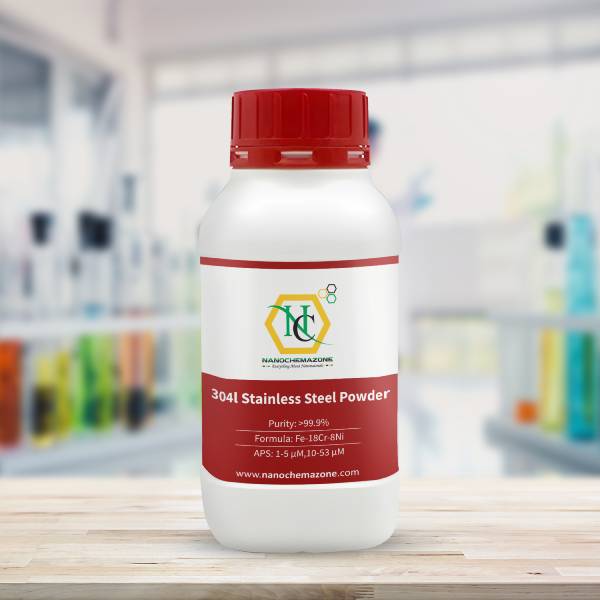
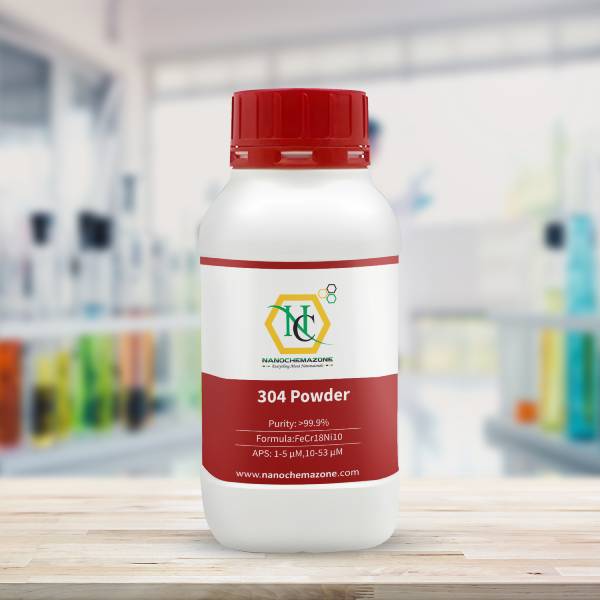
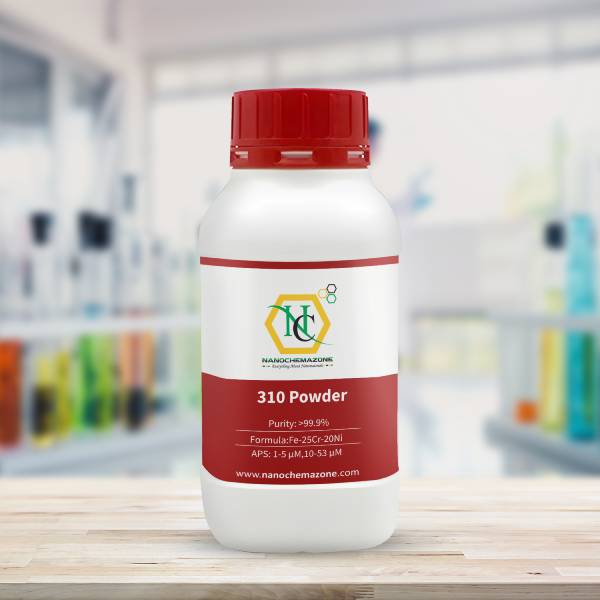
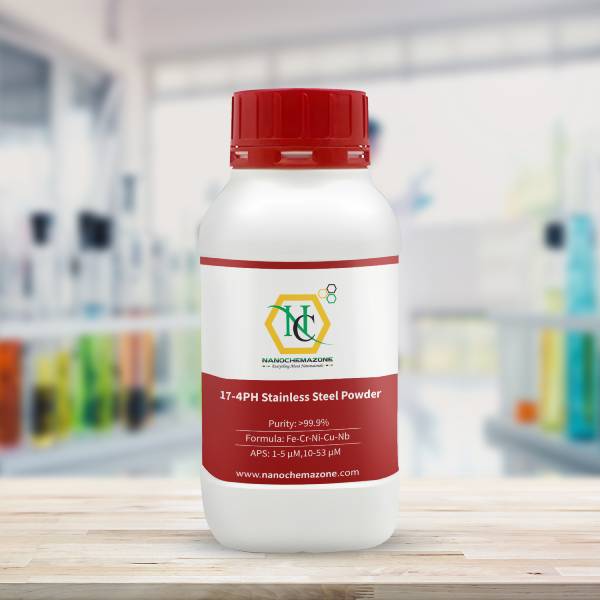
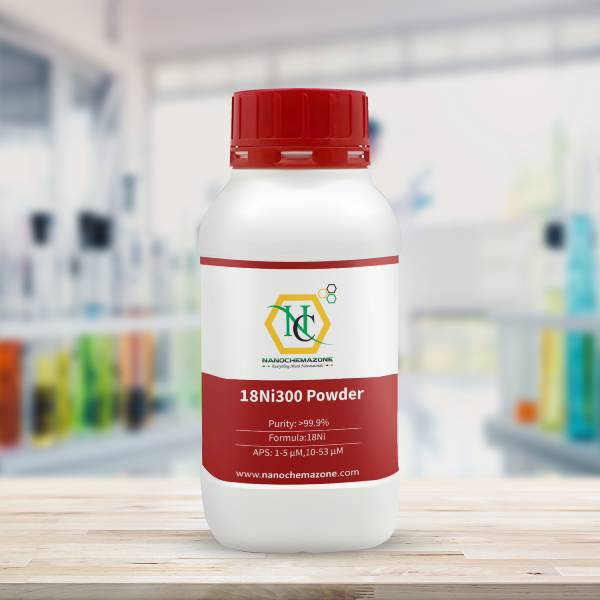

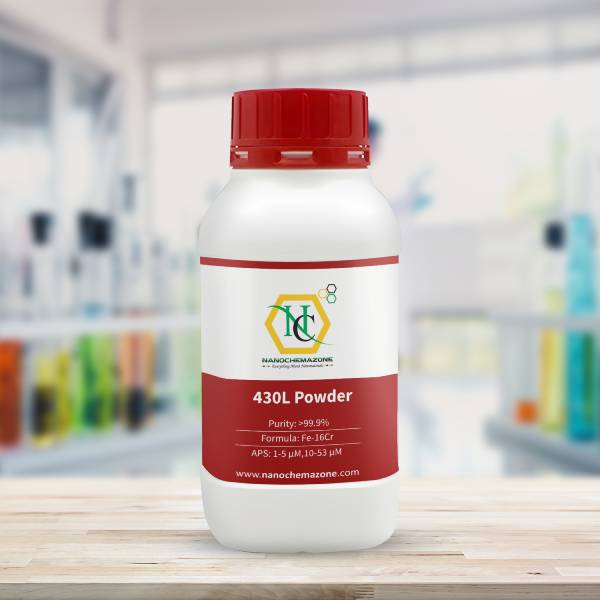
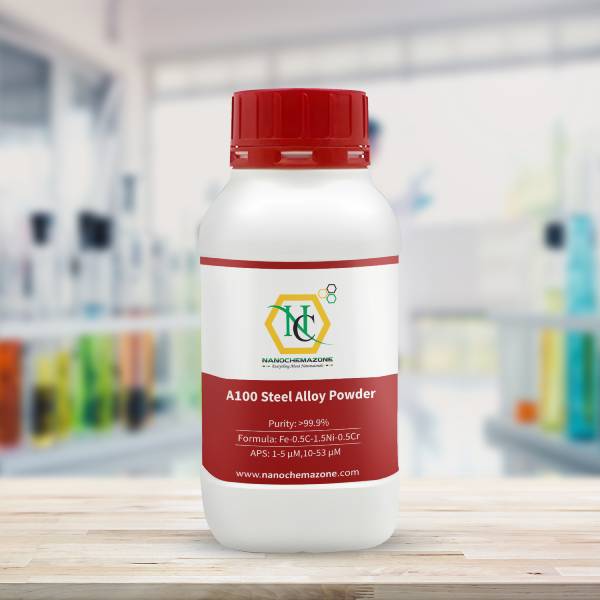
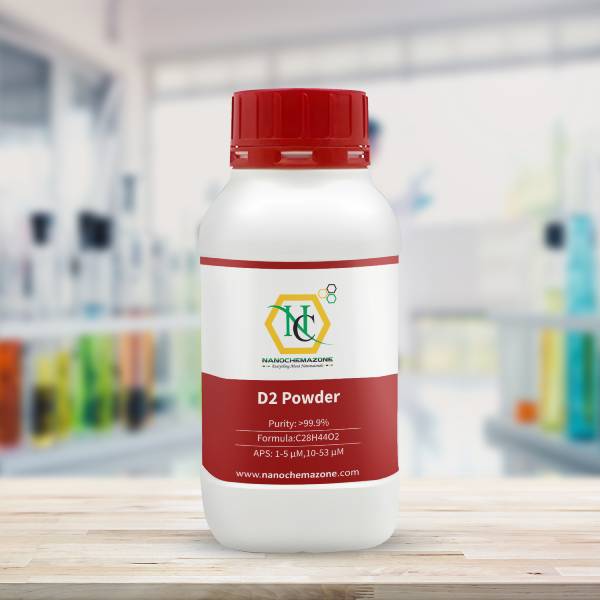
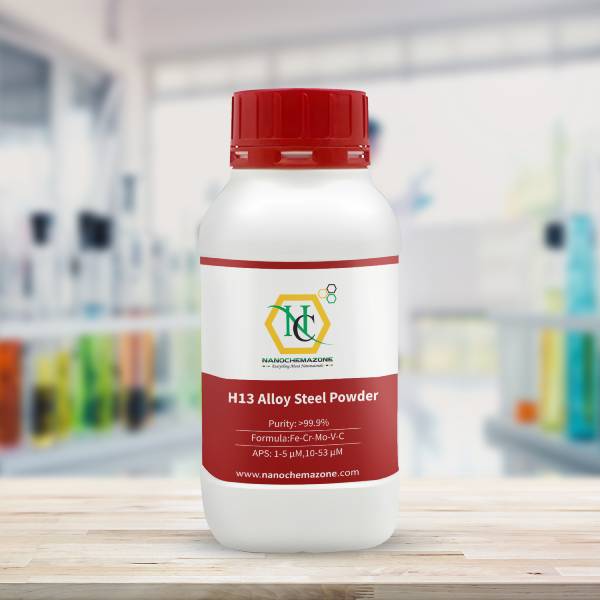
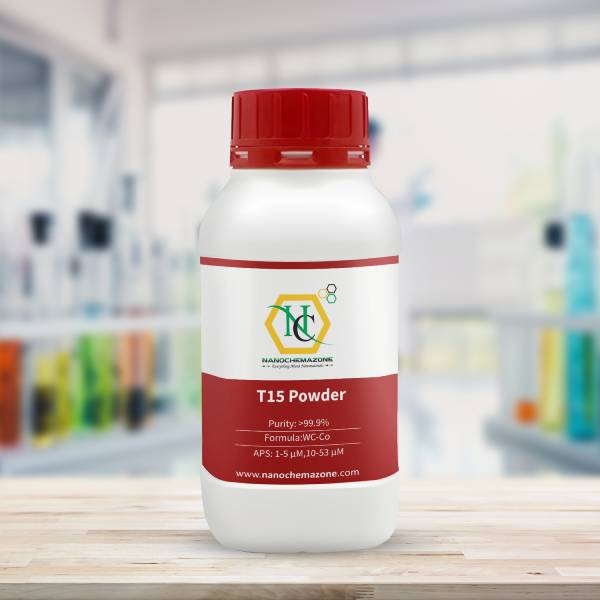
Reviews
There are no reviews yet.